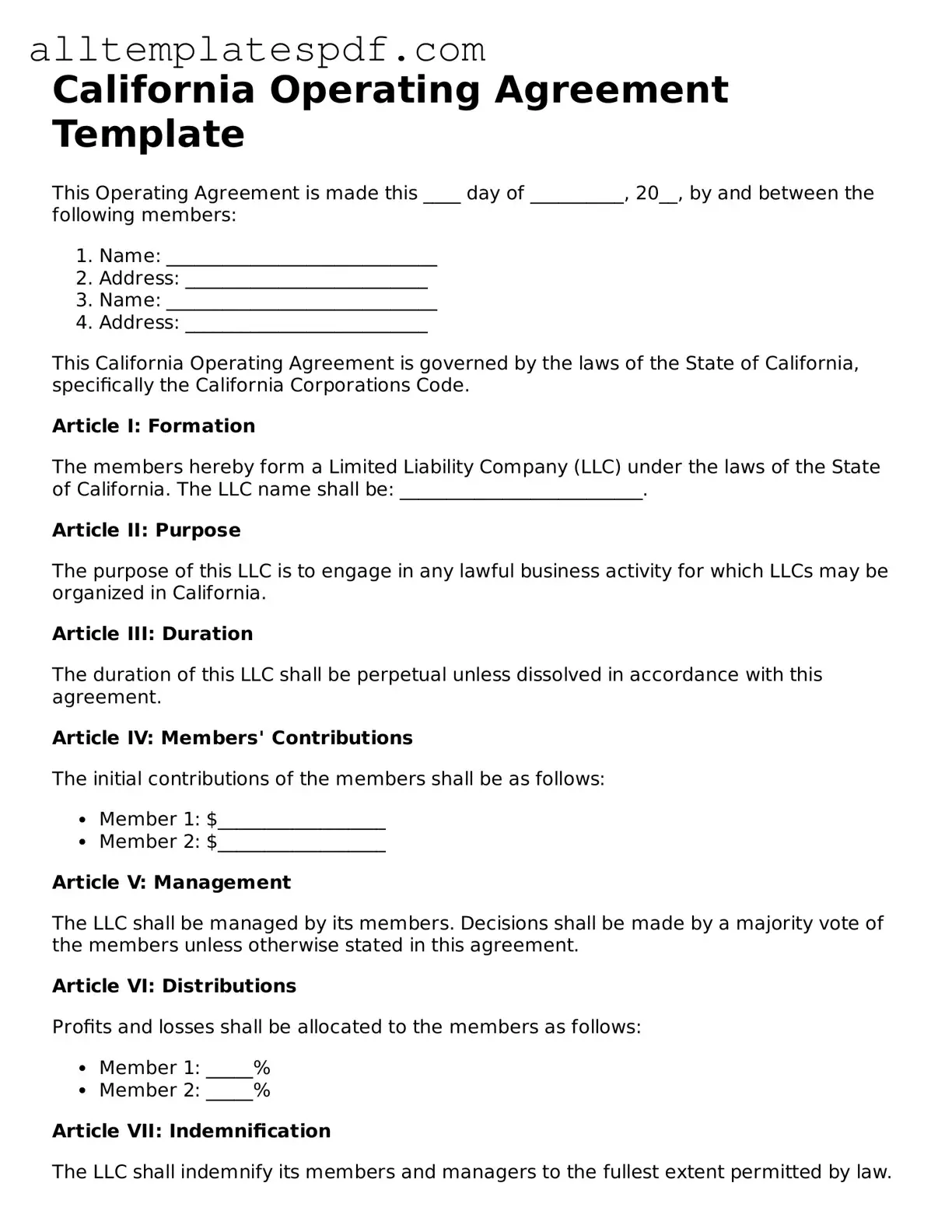When completing the California Operating Agreement form, many individuals encounter common pitfalls that can lead to confusion or legal issues down the line. One frequent mistake is failing to specify the purpose of the LLC. Without a clear statement of purpose, the agreement may lack the necessary context for future operations.
Another common error is neglecting to identify the members of the LLC properly. Each member's name, address, and ownership percentage should be clearly stated. Omitting this information can create disputes later, especially if the ownership stakes are not clearly defined.
Additionally, people often overlook the importance of outlining the management structure. Whether the LLC is member-managed or manager-managed, this distinction should be explicitly noted. Without this clarity, confusion may arise regarding who has the authority to make decisions.
Many individuals also fail to include provisions for adding or removing members. This oversight can complicate future changes in ownership, leading to potential conflicts among existing members. It's essential to have a clear process for such transitions.
Another mistake is not addressing the distribution of profits and losses. The agreement should specify how profits and losses will be allocated among members. If this section is vague or missing, it may result in misunderstandings regarding financial distributions.
Inadequate attention to dispute resolution is another common error. Including a clear process for resolving disagreements can save time and money in the future. Without this, members may find themselves in prolonged disputes without a clear path to resolution.
Some individuals neglect to update the agreement after significant changes occur. Life events, such as a member's departure or changes in business direction, necessitate updates to the Operating Agreement. Failing to do so can render the document outdated and ineffective.
Another mistake involves not complying with California state laws. Each state has specific requirements for Operating Agreements, and overlooking these can lead to legal complications. It is crucial to ensure that the agreement adheres to state regulations.
People sometimes forget to have the agreement signed and dated by all members. A lack of signatures can render the document unenforceable. Therefore, ensuring that all members formally acknowledge the agreement is vital.
Lastly, many individuals do not seek legal advice when drafting the Operating Agreement. While it may seem straightforward, consulting with a legal professional can provide valuable insights and help avoid common mistakes. Legal guidance can ensure that the agreement is comprehensive and tailored to the specific needs of the LLC.
